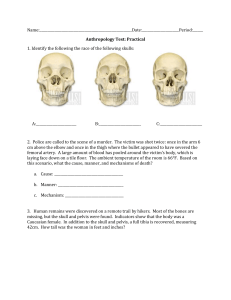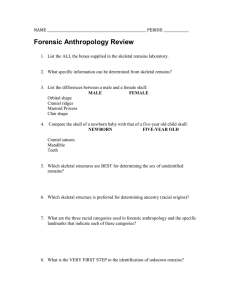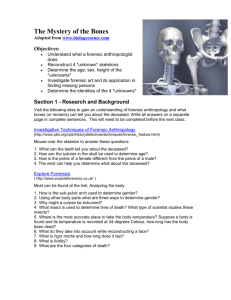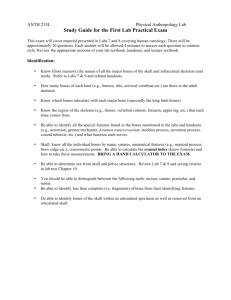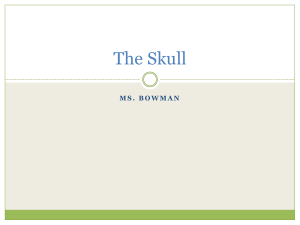Human Tissues, Skeletal System & Forensic Anthropology Guide
advertisement
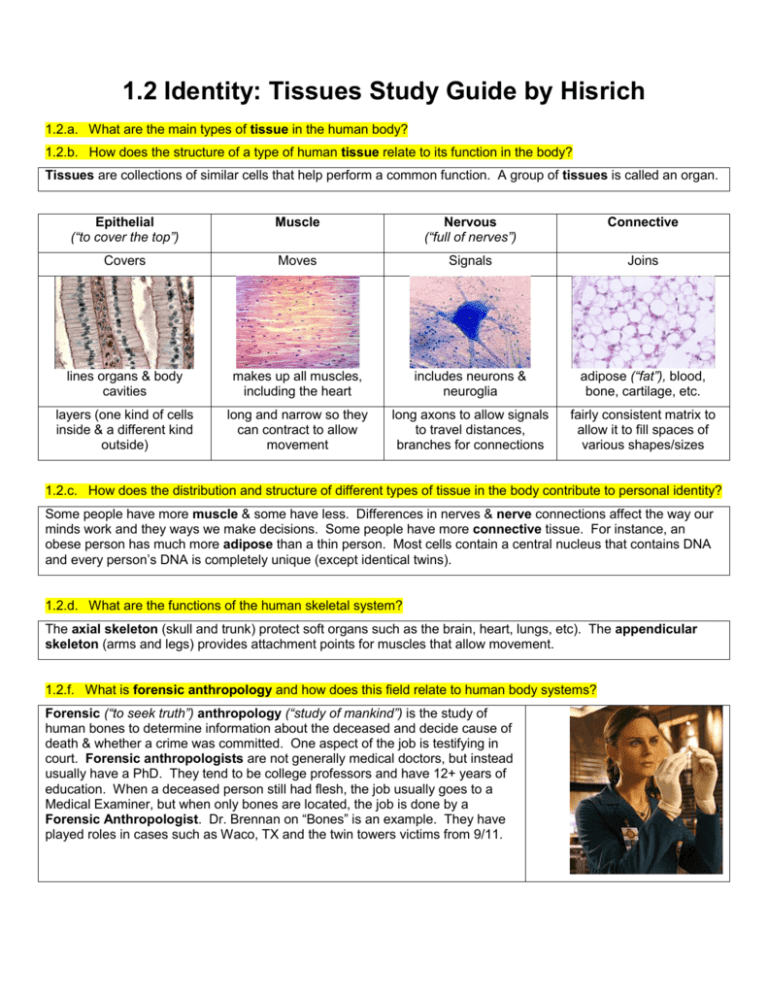
1.2 Identity: Tissues Study Guide by Hisrich 1.2.a. What are the main types of tissue in the human body? 1.2.b. How does the structure of a type of human tissue relate to its function in the body? Tissues are collections of similar cells that help perform a common function. A group of tissues is called an organ. Epithelial (“to cover the top”) Muscle Nervous (“full of nerves”) Connective Covers Moves Signals Joins lines organs & body cavities makes up all muscles, including the heart includes neurons & neuroglia adipose (“fat”), blood, bone, cartilage, etc. layers (one kind of cells inside & a different kind outside) long and narrow so they can contract to allow movement long axons to allow signals to travel distances, branches for connections fairly consistent matrix to allow it to fill spaces of various shapes/sizes 1.2.c. How does the distribution and structure of different types of tissue in the body contribute to personal identity? Some people have more muscle & some have less. Differences in nerves & nerve connections affect the way our minds work and they ways we make decisions. Some people have more connective tissue. For instance, an obese person has much more adipose than a thin person. Most cells contain a central nucleus that contains DNA and every person’s DNA is completely unique (except identical twins). 1.2.d. What are the functions of the human skeletal system? The axial skeleton (skull and trunk) protect soft organs such as the brain, heart, lungs, etc). The appendicular skeleton (arms and legs) provides attachment points for muscles that allow movement. 1.2.f. What is forensic anthropology and how does this field relate to human body systems? Forensic (“to seek truth”) anthropology (“study of mankind”) is the study of human bones to determine information about the deceased and decide cause of death & whether a crime was committed. One aspect of the job is testifying in court. Forensic anthropologists are not generally medical doctors, but instead usually have a PhD. They tend to be college professors and have 12+ years of education. When a deceased person still had flesh, the job usually goes to a Medical Examiner, but when only bones are located, the job is done by a Forensic Anthropologist. Dr. Brennan on “Bones” is an example. They have played roles in cases such as Waco, TX and the twin towers victims from 9/11. 1.2.g. How can features of bone be used to determine information about a person’s gender, ethnicity, age or stature? Gender can best be determined from skull or pelvis Males square eye sockets u-shaped mandible brow ridges & sharper heartshaped pelvis Females round eye sockets v-shaped mandible smoother bones rounded pelvis wider pubic arch angled-in coccyx skulls (esp. nasal index) are best determinant of race 1.2.e. What are the main bones of the human skeletal system? Meta = between Cervic = neck Tars = instep, ankle Crani = skull Carpal = wrist Vert = to turn Pel = push Thorac = chest Clav = collarbone Fibul = outer bone of leg Pariet = wall humerus and femur length are best predictors of height Zyg = join bone fusion (especially) in pelvis is best predictor of age Occ = eye (older = more fused)
